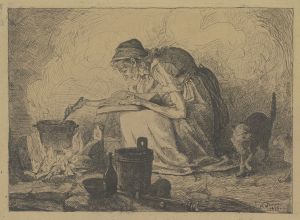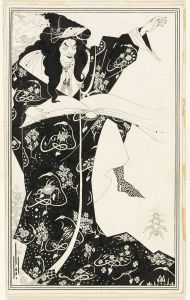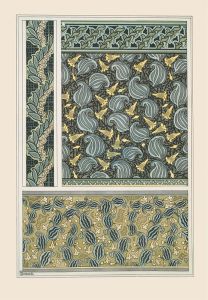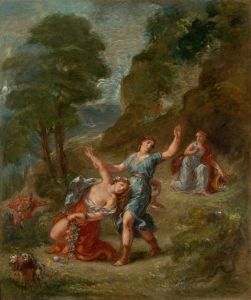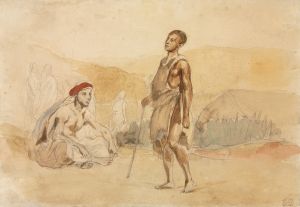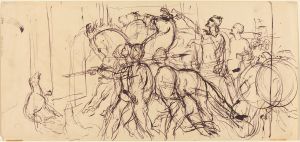
The Witches’ Sabbath
A hand-painted replica of Eugène Delacroix’s masterpiece The Witches’ Sabbath, meticulously crafted by professional artists to capture the true essence of the original. Each piece is created with museum-quality canvas and rare mineral pigments, carefully painted by experienced artists with delicate brushstrokes and rich, layered colors to perfectly recreate the texture of the original artwork. Unlike machine-printed reproductions, this hand-painted version brings the painting to life, infused with the artist’s emotions and skill in every stroke. Whether for personal collection or home decoration, it instantly elevates the artistic atmosphere of any space.
Eugène Delacroix, a prominent French Romantic artist, is renowned for his expressive brushwork and vibrant use of color. Among his diverse body of work, "The Witches' Sabbath" is a painting that reflects his fascination with themes of the supernatural and the fantastical. Delacroix's interest in such subjects was influenced by the Romantic movement, which often explored the mysterious and the irrational as a counter to the Enlightenment's emphasis on reason.
"The Witches' Sabbath" is believed to have been painted around 1828, during a period when Delacroix was deeply engaged with themes of drama and emotion. This painting is a vivid depiction of a gathering of witches, a subject that has intrigued artists and writers for centuries. The concept of a witches' sabbath—a meeting of witches to practice magic and engage in rituals—has its roots in European folklore and was a popular theme in Romantic art and literature.
Delacroix's interpretation of the witches' sabbath is characterized by dynamic composition and dramatic contrasts of light and shadow, which are hallmarks of his style. The painting captures a sense of movement and chaos, with figures arranged in a swirling, almost frenzied manner. This composition not only conveys the supernatural energy of the scene but also reflects Delacroix's mastery of creating tension and emotion through visual elements.
The color palette in "The Witches' Sabbath" is rich and varied, with deep reds, blues, and earthy tones that enhance the painting's otherworldly atmosphere. Delacroix's use of color was often inspired by his admiration for the works of the Venetian Renaissance painters, and in this painting, he employs color to evoke mood and emotion effectively.
While "The Witches' Sabbath" is not as widely known as some of Delacroix's other works, such as "Liberty Leading the People," it remains an important example of his exploration of Romantic themes. The painting reflects Delacroix's interest in the darker aspects of human experience and his ability to convey complex narratives through his art.
Delacroix's work, including "The Witches' Sabbath," had a significant impact on the development of modern art. His innovative use of color and expressive brushwork influenced later artists, including the Impressionists and Post-Impressionists, who admired his ability to capture emotion and movement.
In summary, "The Witches' Sabbath" by Eugène Delacroix is a compelling representation of the Romantic fascination with the supernatural. Through his dynamic composition and vibrant use of color, Delacroix creates a powerful image that continues to captivate viewers with its dramatic portrayal of a mythical gathering of witches.






